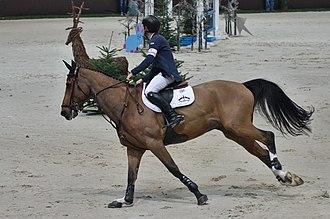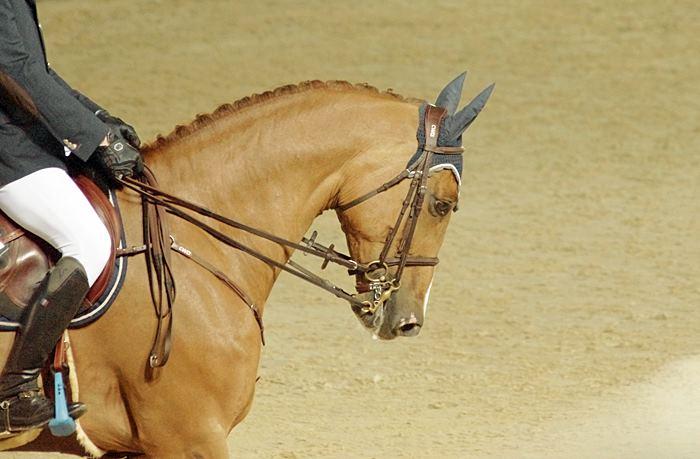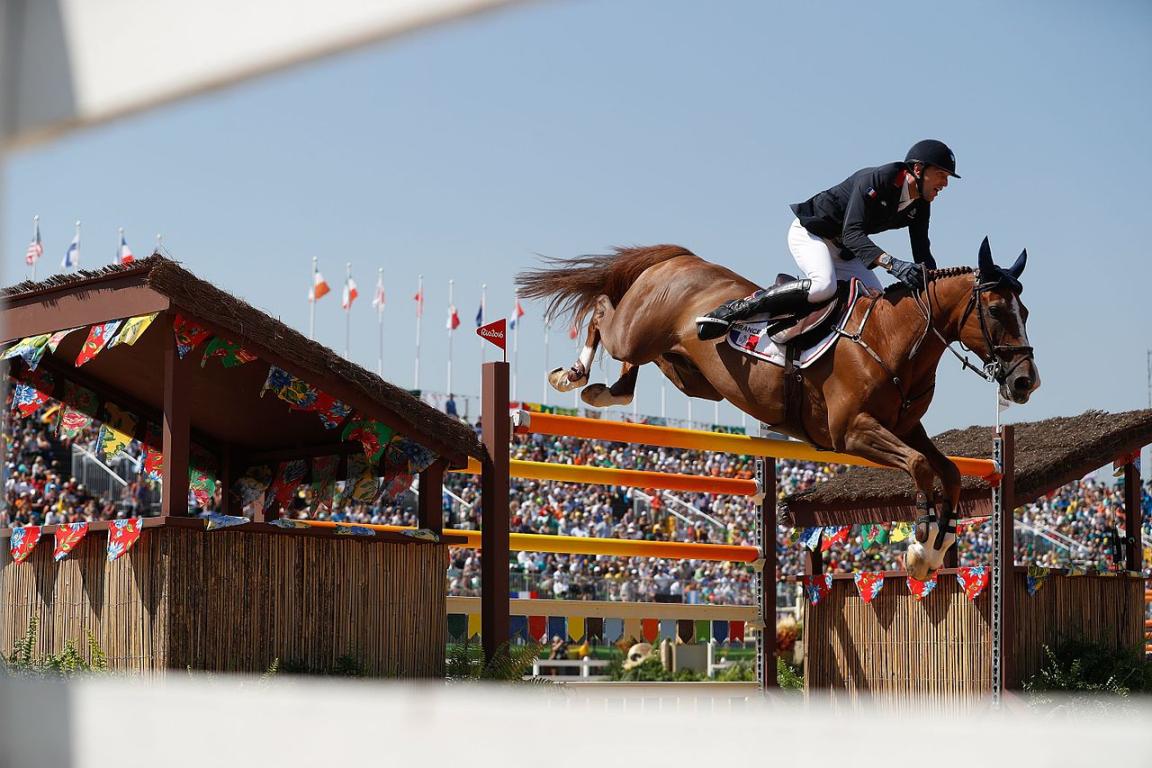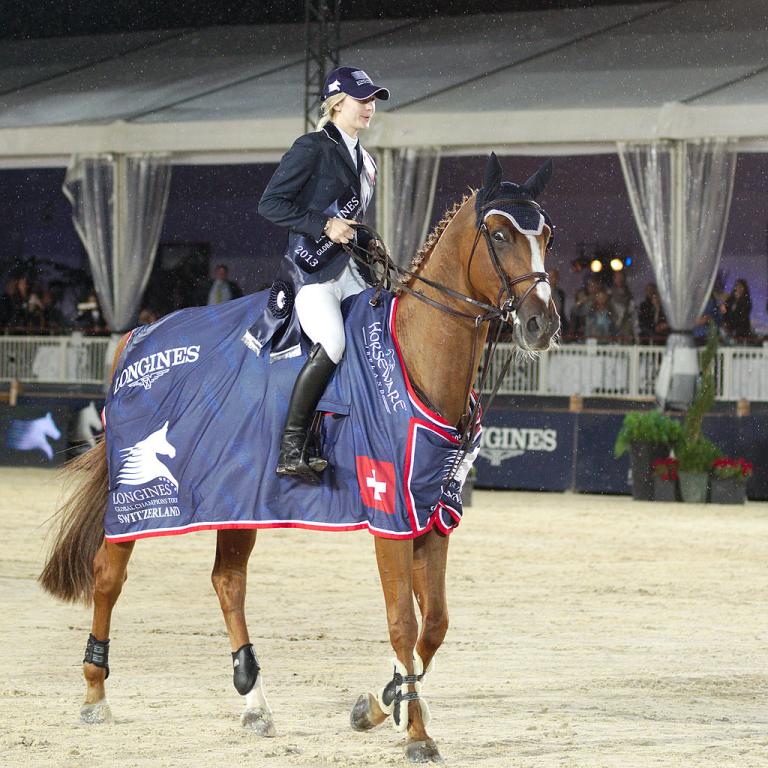
Continent: Europe
Country: Belgium
Weight: 500 – 550 kg
Height: 158 – 180 cm



The Belgian Sport Horse (sBs) originates from Wallonia, the French-speaking region of Belgium. It descends from the Belgian army horse, initially bred for military cavalry and police forces.
During the 20th century, the breeding focus gradually shifted toward creating a more versatile sport horse, better suited for civilian and competitive use. This evolution was achieved through selective crossbreeding with elite international bloodlines, including the Selle Français, Hanoverian, KWPN, and Thoroughbred.
Since becoming an independent stud-book in 1991, the sBs has aimed to produce horses that are athletic, elegant, and balanced, primarily selected for show jumping, while also being capable in dressage and eventing.
Breeding of the Belgian Sport Horse (sBs) is historically and predominantly based in Wallonia, especially in the provinces of Namur, Liège, and Hainaut. The town of Gesves, home to the annual Selection Show, is a key center for the evaluation and presentation of young stallions.
However, the sBs stud-book also claims a national presence, with breeders established in Flanders as well.
Internationally, the sBs is well represented, particularly in the United States, where several stallions are based and where an American branch organizes local inspections. sBs breeders can also be found in France, Germany, and occasionally in Asia, especially China, thanks to export opportunities.
The Belgian Sport Horse (sBs) holds a significant position in the genetics of international sport horses. Its stud-book is among the most open and selective in Europe, welcoming sires from prestigious foreign bloodlines such as Baloubet du Rouet, Vigo d'Arsouilles, Kannan, and others.
This controlled integration policy has enabled the sBs to produce horses with proven athletic abilities, particularly in show jumping.
The stud-book’s strict selection process, combined with modern genetic evaluation tools (breeding values, young horse cycles), contributes to the ongoing improvement of European sport horse lines.
Through this, the sBs plays an active role in the global dissemination of high-performance genetics, while maintaining high standards in temperament and conformation.
Military Origins (1920–1930s):
The history of the Belgian Sport Horse began in 1920 with the creation of the Society for the Promotion of Army Horse Breeding, whose mission was to provide solid and reliable horses to the Belgian army and gendarmerie. This "military horse" was a robust Belgian half-blood, resulting from crosses between the Belgian Draft Horse, Thoroughbreds, and other European breeds.
As armies became increasingly motorized in the 1930s, breeding goals shifted. The stud-book was renamed "Le Demi-Sang Belge" (The Belgian Half-Blood), now aiming to produce lighter saddle horses, closer to the Thoroughbred type, for civilian use, including recreational riding and sport.
Reconstruction and Modernization (1945–1990):
After World War II, breeding was in decline. Very few mares and stallions remained. To revive the breed, crossbreeding with foreign sport horses was encouraged, notably with Selle Français, Thoroughbreds, Hanoverians, KWPNs, Anglo-Arabs, and others.
This genetic diversity produced increasingly athletic horses, especially in show jumping. In 1967, the society was granted the title of "Royal Society" in recognition of its contribution to national horse breeding.
Creation of the sBs Stud-Book (1991):
In 1991, the structure took its current form under the name sBs Stud-Book (Royal Society Belgian Sport Horse). It introduced the "blue booklet", the official registration document ensuring lineage and performance traceability. This marked a clear shift toward a modern selection approach, focused on top-level sport.
The sBs stud-book distinguished itself by being open to high-quality foreign horses, regardless of nationality. It was the first stud-book to approve stallions like Baloubet du Rouet, Kannan, Toulon, and Vigo d’Arsouilles, even before their international fame.
Expansion and International Recognition (2000–Today):
The sBs developed advanced genetic selection tools, including young horse performance cycles (Cycle Classique), centralized sports performance tracking, and an online database containing over 90,000 registered horses.
The breed gained worldwide recognition thanks to champions such as:
-Hello Sanctos (Scott Brash), ranked #1 in the world in show jumping (2014–2015)
-Barron (Lucy Davis), participant in the 2016 Olympics
-All In, silver medalist at the Rio Olympics
-Rêveur de Hurtebise, Mozart des Hayettes, Bogeno, and others
The sBs also expanded internationally, with a U.S. branch, local inspections, and export activity to markets such as China.
A Dynamic Breed with a Forward-Thinking Vision:
Today, the Belgian Sport Horse (sBs) is recognized as one of the five most influential stud-books in show jumping. Thanks to its genetic flexibility, rigorous selection, and ability to spot promising sires before other stud-books, the sBs plays a key role in developing European sport horses.
It continues to evolve in line with the needs of international sport, while promoting quality, genetic diversity, and the willing character of its horses.
The Belgian Sport Horse (sBs) is renowned for its balanced temperament and its willingness to cooperate with humans. The stud-book places great importance on behavior, especially in stallions, systematically excluding horses that are aggressive, unstable, or overly nervous.
Overall, sBs horses display a gentle, intelligent, and honest nature, making them popular among both professional riders and experienced amateurs.
They are typically calm under saddle, responsive without being hot, and able to adapt to various equestrian disciplines.
Their eagerness to perform and their work ethic are highly valued in competition—particularly in show jumping, where composure, responsiveness, and control are essential. These traits make the sBs both high-performing and pleasant to handle, whether on the ground or in the ring.
The Belgian Sport Horse (sBs) enjoys strong prospects, supported by a dynamic breeding strategy focused on genetic openness and high-level performance. Its ability to integrate the best European bloodlines, while maintaining strict genetic evaluation, allows the sBs to stay competitive in the international show jumping market.
Facing increasing competition among global stud-books, the sBs is investing in:
-advanced genomic selection tools,
-high-performance young horse circuits, and
-expanded international presence, notably through its U.S. branch.
A key challenge in the coming years will be to maintain a distinct identity in contrast to the BWP stud-book, while improving the visibility of its sires in top-level competitions. Sustainable breeding practices, health traceability, and behavioral selection are also central to the breed's future development.
Like most European sport horses, the Belgian Sport Horse (sBs) is known for its strong and functional conformation, resulting from rigorous selection based on morphology, limb alignment, and athletic ability.
However, due to its specialization in demanding disciplines such as show jumping, some individuals may be prone to orthopedic conditions caused by repetitive strain, including:
-Joint disorders (early-onset arthritis, fetlock or stifle injuries),
-Tendon problems,
-Degenerative diseases of the back or hocks.
To reduce the risk of heritable issues, the sBs stud-book enforces strict veterinary approval for breeding animals, including mandatory X-rays and a comprehensive clinical examination.
Overall, the sBs benefits from a strong health status, supported by strict vaccination requirements (against equine influenza and rhinopneumonitis) and close veterinary monitoring, especially during official evaluations.
A natural four-beat gait, regular and well-articulated. The sBs walk is ample and supple, with good hind leg engagement and elasticity appreciated in dressage.
A two-beat, symmetrical and suspended gait. The sBs trot is energetic, with a powerful push from the hindquarters and good elevation. Ideal for dressage and show jumping.
A three-beat gait with a moment of suspension. The sBs canter is ample, balanced, and shows strong propulsion and bounce, making it highly effective in jumping.
Born on 01/01/2002
- Ranked #1 show jumping horse in the world in 2014 and 2015
- Triple Grand Slam winner (Geneva, Aachen, Spruce Meadows) with rider Scott Brash
- Member of the British team gold medalist at the 2012 London Olympics
- Winner of numerous CSI5* competitions worldwide
- Ridden by Lucy Davis (USA)
- Team silver medalist at the 2014 World Equestrian Games
- Finalist at the 2016 Rio Olympics
- Numerous CSI5* placings
- Known for his explosiveness and consistency in Grand Prix events
Born on 01/01/2006
- Ridden by Peder Fredricson (Sweden)
- Individual silver medalist at the Rio 2016 Olympics
- Team gold and individual silver medalist at the Tokyo 2021 Olympics
- Renowned for his style, calmness, and intelligence in the arena
Born on 01/01/2001
- Ridden by Kevin Staut (France)
- Winner of Nations Cups and CSIO Grand Prix events
- Competed at the 2016 Rio Olympics
- Praised for his consistency and sensitivity
Born on 01/01/1997
- World Champion of 6-year-old horses in 2003 at Lanaken
- Successful in young horse classes and Grand Prix competitions
Born on 01/01/2007
- Ridden by Constant van Paesschen
- Multiple CSI placings, known for consistent performance
- Descendant of a widely used breeding line

Equi TV revient sur un des moments phare de la saison du studbook belge sBs: le Selection Show. Découvrez tout de cet évènement qui en 29 éditions a su se rendre incontournable.

Le Selection Show 2014 était l'occasion de vérifier l'aura dont bénéficie le sBs auprès des étrangers. Egalement cette semaine, la conférence de presse organisée par la LEWB en prévision des grands rendez-vous de jumping de l'année.